This post may contain affiliate links. Please read our disclosure policy.
How to rehydrate and clean sea cucumber-Cleaning sea cucumber is not as daunting as you think. A lot of passive waiting, but not labor-intensive.
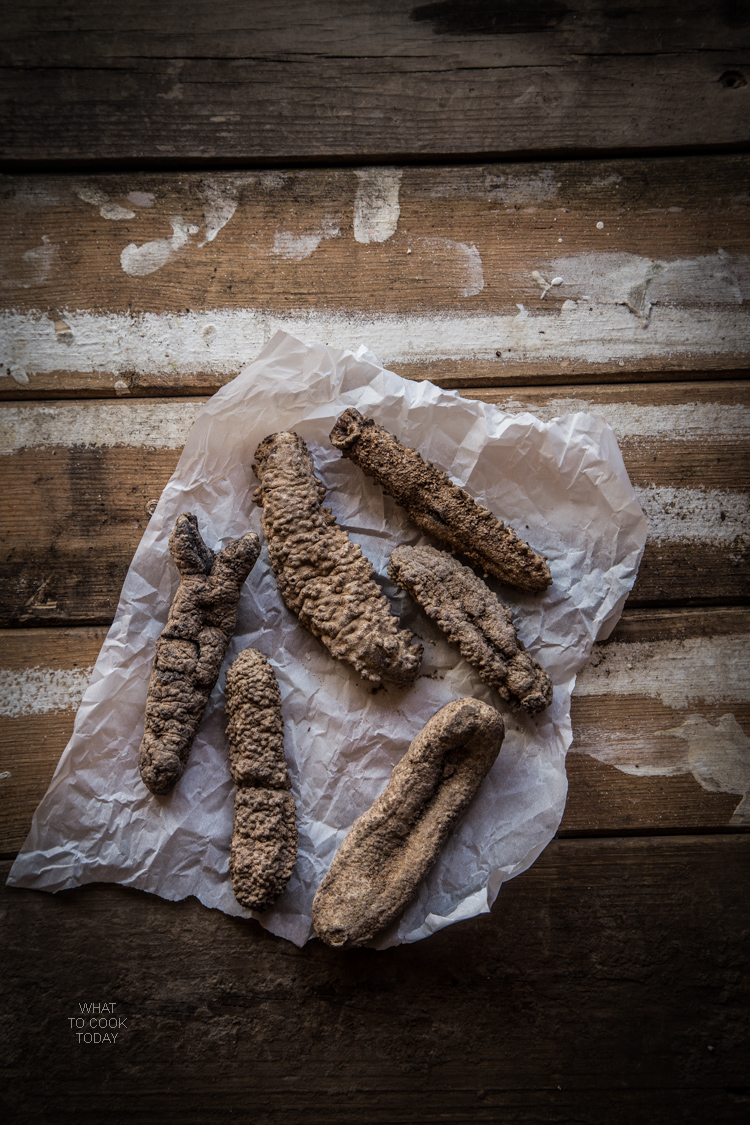
WHAT IS SEA CUCUMBER?
Sea cucumbers are marine animals with a leathery skin and an elongated body. Sea cucumbers are found on the sea floor worldwide, or they call it trench (I learned that from my kids’ Cat’s in the head book). They are usually being sold in a dried form and already pre-soaked form in certain Asian grocery shops that carry gourmet ingredients. We call sea cucumber HaiSom in Hokkian dialect.
Sea cucumber is considered a gourmet ingredient in Asian cuisine. I probably get to eat Sea cucumber once a year during Chinese New Year or if we have any special gathering or family events. They come in different size and quality/grades too.
1 pound (about 500 g) of this “medium grade” (If I can say that) sea cucumber cost around $80.00. And you are thinking “For a rock-looking thing ?” You bet!
WHAT DOES SEA CUCUMBER TASTE LIKE?
Once it is soaked, it will soften and be bouncy. The sea cucumber itself does not have any taste. That probably makes you feel even more absurd. The best part is, it will absorb whatever flavor or dish you cook them in.
CAN I BUY PRE-SOAKED SEA CUCUMBER?
The preparation of the sea cucumber itself (if you bought it in a dried form) took me about 1 week. My mom does not recommend buying the pre-soaked form. They are “cheaper” and “bigger”. However, look can be deceiving. They are bigger because they have been pre-treated with certain chemicals to make them bigger. However, when you cook them, they will shrink. So, I would say a No-No for pre-soaked sea cucumber. If you want to eat sea cucumber, sorry, there’s no shortcut, you just have to rehydrate them yourself.
HOW TO REHYDRATE AND CLEAN SEA CUCUMBER
Cleaning sea cucumber is actually not as daunting as I used to think. You just need to plan ahead when you are going to make a dish using sea cucumbers because it takes some time to prepare and get the hard rock sea cucumber to soften and plumped up. There are so many different varieites of sea cucumbers. The first time my husband brought home some dried sea cucumber 6 years ago, they were kind of different than the one shown here in the photos. They have more whitish coating on them and inside them, while these have more bumps on the outer skin. The ones I was showing in the video were also a different variety. They are black in color and have orange innards and walls inside.
Here was me trying to rehydrate the dried sea cucumber by submerging them in clean water. You need to make sure to change the water every day. I cover them with a cling wrap so no other particles will get in and put the bowl in the refrigerator during soaking period to prevent bacterias from growing.
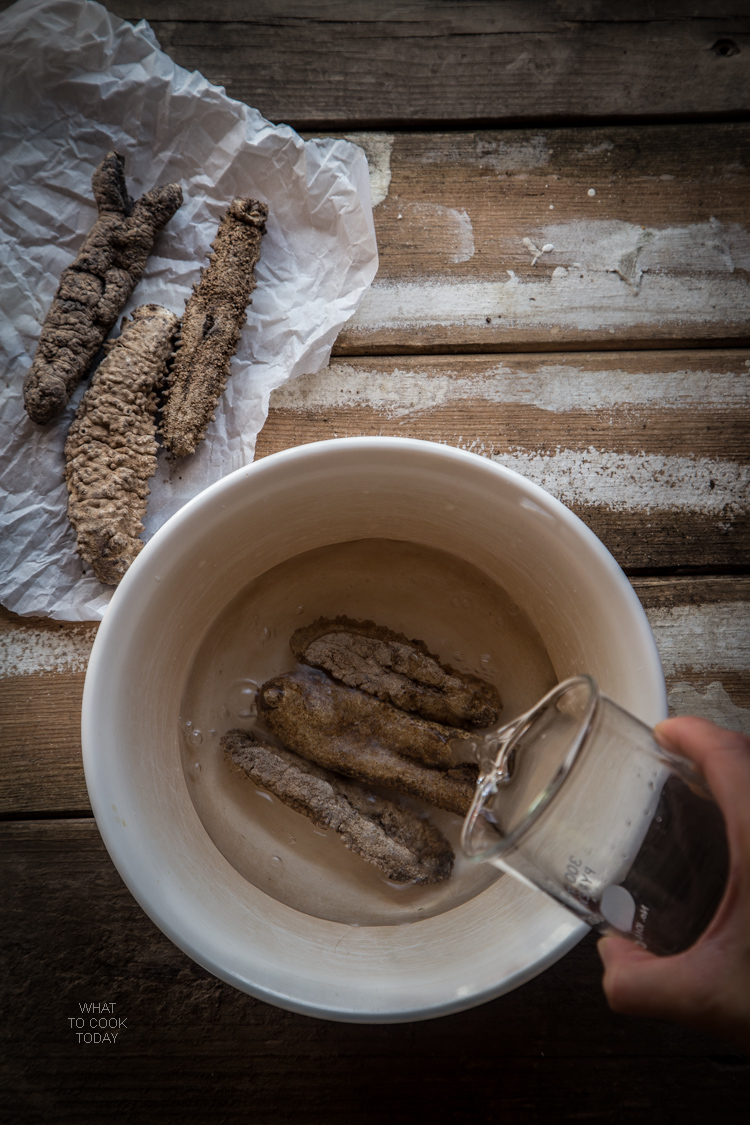
This was on day 4 of rehydration. The sea cucumbers are soft and plump enough that I’ve ended the soaking period on this day. Some of them may need longer soaking period. You may ask the sellers what they recommend, though not all of them would be able to tell you. The first batch my husband brought home 6 years ago was soaked for 6 days before they were plumped enough to be cleaned. You can see the sizes have doubled/tripled from their original dried forms.
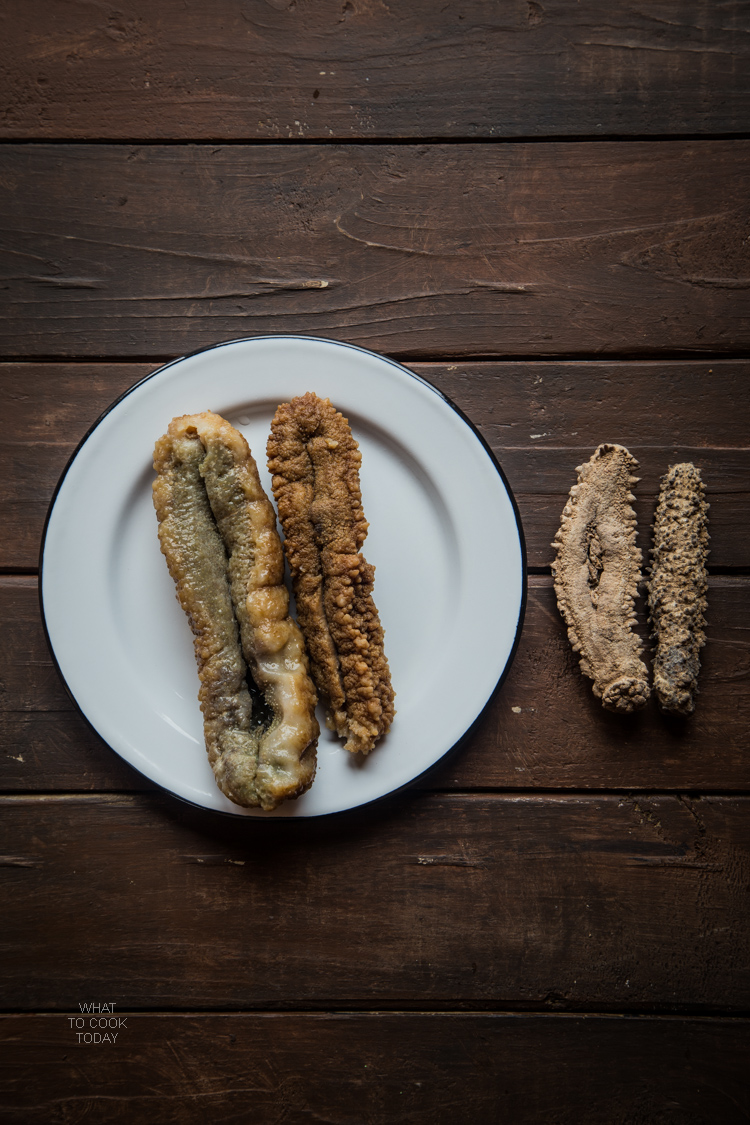
I tried my best to scrap all the “stuff” out from the inside of the sea cucumber. I scrap off whitish stuff that stuck to the inner walls of the sea cucumber too. I did this over a small stream of fresh running water. Here I asked my husband to help me pry open to show you what it’s like before it’s being cleaned. You can see all the stuff inside
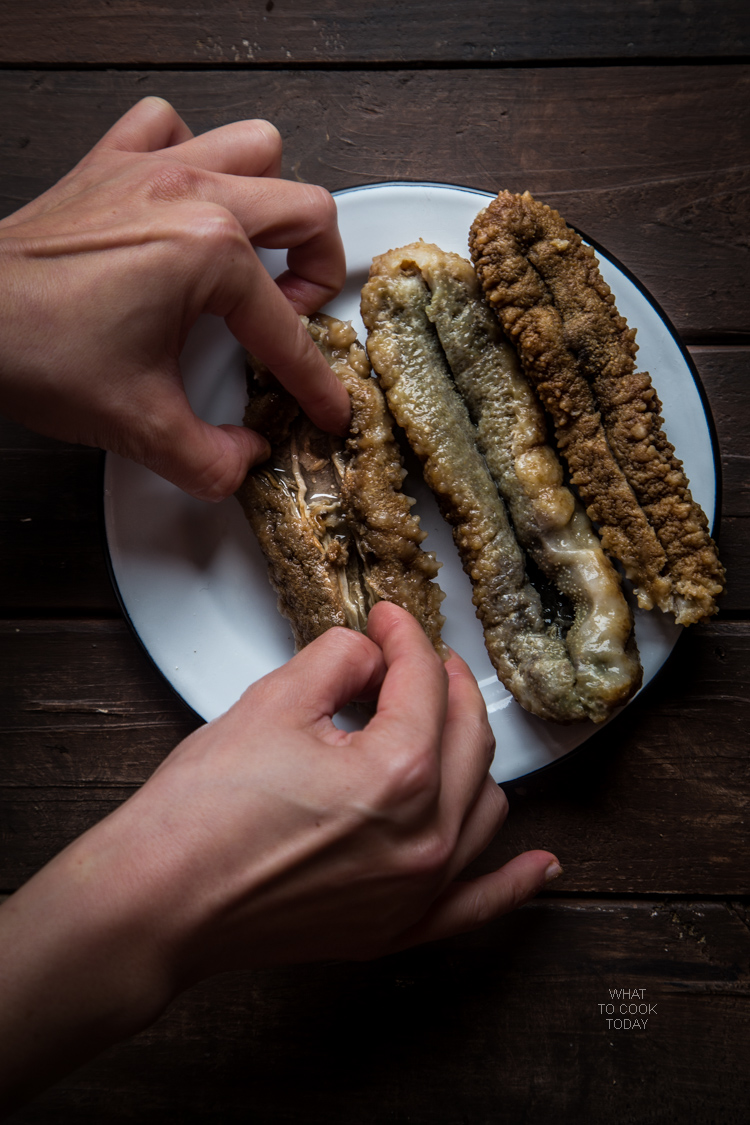
And this was after being cleaned. There’s all to that! It’s not hard, but it sure takes time though!
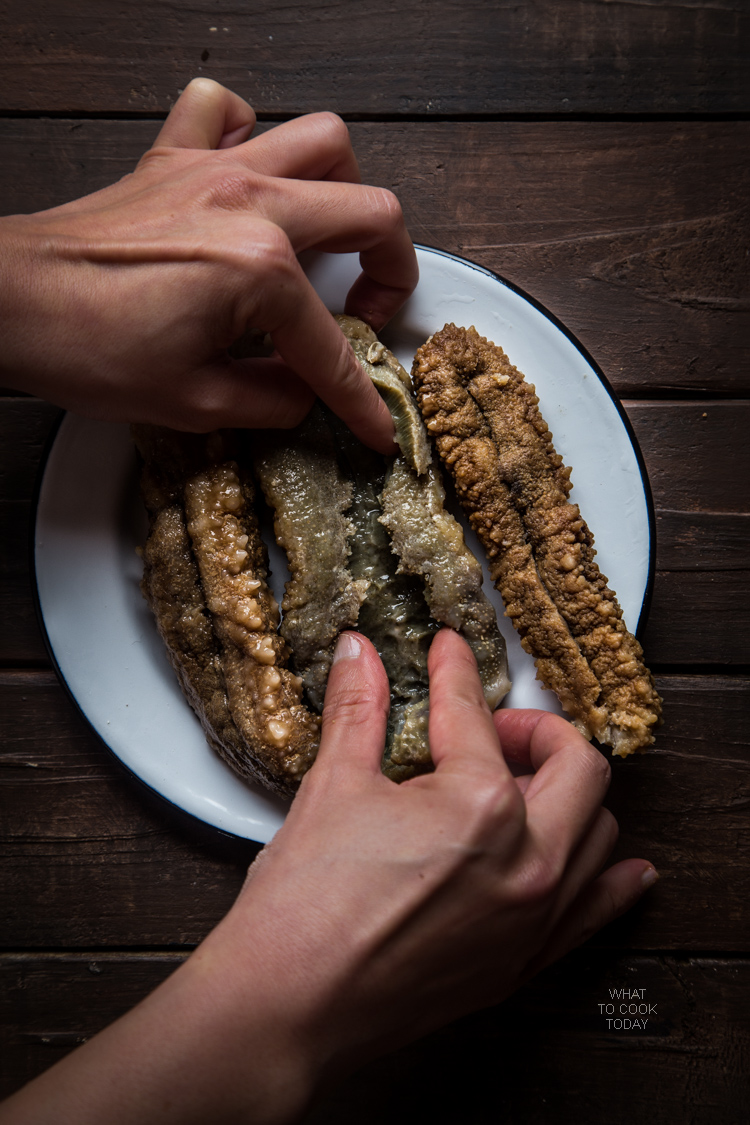
How to clean sea cucumbers
Ingredients
- Dry Sea cucumber
Instructions
Rehydrating:
- Always check with the seller when possible, on how many days you need to soak the sea cucumber as this depend on the size, the grade/quality of the sea cucumber you get
- If you are soaking for several days, always change with fresh water every day until the end of the recommended soaking period. Make sure the sea cucumbers are completely submerged in the water. Cover them so no other particles will get in. Put them in the fridge during soaking period
- After 4 days of soaking, they have soften considerably. I run my thumb up and down to get rid off the stuff inside the sea cucumber. You may need a knife or scissors if it's hard to do it with your hands. You may also need to scrap the outside of the sea cucumber to get rid of the extra "whitish" crust if any is present. Some variety doesn't have this whitish crust (like the one I'm showing in the video)
- It had almost tripled or quadurpled in size at the end of the soaking period
Boiling (optional):
- At the end of the soaking period, in my case, day 4, boil the sea cucumber for about 1 hour in a big pot with a lid on over low to medium heat and do not remove the cover
- If you use a pressure cooker like I did in the video, I pressure cook on high pressure for 20 minutes
- Throw away the water. If they are still hard, boil again with a fresh water until it is soft and bouncy (you can leave the lid out this time). Be careful not to over boil or it can turn into mush
How to store:
- Let them cool down completely. Wrap them up individually in plastic wrap and place in freezer bag. They can be kept frozen for up to 2 months. Just thaw and proceed to cook with recipe or you can proceed to boil (instruction below)
- You can wrap them with plastic wrap and freeze them if you are not going to use them soon. They can be freeze for 1 month
When ready to use them:
- When ready for use, thaw them in the refrigerator overnight and then cut them into the desired sizes and proceed with recipe you plan to cook
RECOMMEDED TOOLS
Have you ever cleaned sea cucumber on your own? what do you think of it?
Click here for recipes using Sea Cucumber.

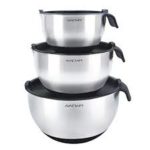


4 comments
Loved your info on sea cucumbers. About cleaning the inside of the rehydrated cucumber….
You’d mentioned removing the whitish stuff. However my rehydrated sea cucumber had what appears as an orangy-brown linear lining….it was not soft and mushy like the rest of the sea cucumber. Should this inside tougher part be removed or is it edible? It was a little crunchy or chewy after I had cooked it. I have eaten them in restaurants and I don’t recall ever have any crunch or chewiness to the insides of them.
Hi Jeannie, some sea cucumbers apparently have the orange color linings. The one I bought had white lining. You want to scrape all those off too actually. Those are all the internal parts of the sea cucumbers and if you cooked it together with the sea cucumber, they will turn chewy.
Yr recipe is truly helpful
Thank you so much Deborah. I’m so glad it is helpful 🙂